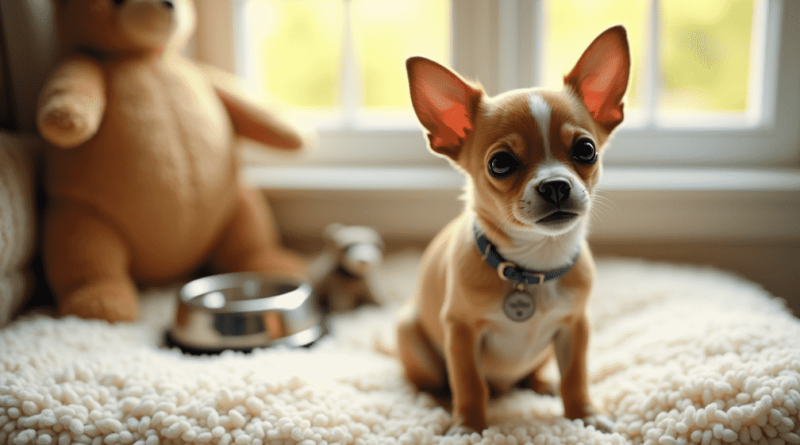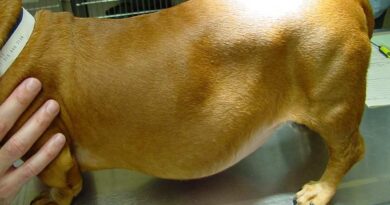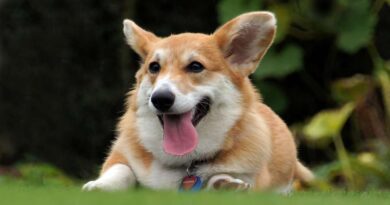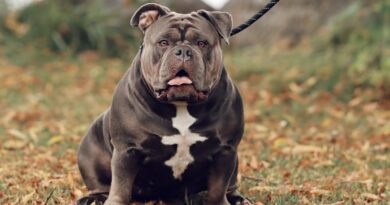Deer Head Chihuahua: What Breeders Won’t Tell You About This Loyal Companion
Most people know deer head Chihuahuas from Legally Blonde or Taco Bell commercials. These tiny dogs have left their mark in pop culture. The American Kennel Club hasn’t officially recognized them yet, but their unique traits and loyal nature have won many hearts.
These energetic dogs stand tall and pack an amazing personality into their tiny frame. Their lifespan ranges from 14 to 16 years, which makes them one of the longest-living dog breeds. My detailed research about these sassy pets shows that potential owners should look beyond their $300-$1200 price tag.8 to 12 inches
This piece covers everything a future owner needs to know. We’ll look at significant breeder warning signs and examine health issues that sellers rarely mention upfront. The largest longitudinal study reveals interesting patterns about their well-being.
Finding Your Deer Head Puppy
Choosing a reputable breeder for your deer head Chihuahua demands thorough research and attention to detail. Note that legitimate breeders keep their facilities clean and well-ventilated, and raise puppies indoors with their mothers [1].
Red flags when dealing with breeders
Your breeder should welcome facility visits and proudly introduce both parent dogs. These warning signs should raise concerns:
- Reluctance to share health records or pedigree information
- Pushing for quick sales or meeting in public places
- Multiple litters available simultaneously
- No questions about your home environment or experience
- Unwillingness to provide post-adoption support
Price ranges to expect
Regional differences substantially affect deer head Chihuahua prices. Northeast and West Coast breeders charge between $800 and $2,500[2]. Midwest prices typically fall between $700 and $2,000 [2], while Southern states range from $600 to $2,200 [2]. Unusually low prices could indicate poor breeding practices.
Questions to ask before buying
Start by asking about health testing and genetic screening. A quality breeder will provide vaccination records, deworming schedules, and a health guarantee [3]. The puppy’s socialization practices matter – they need exposure to household environments and different stimuli [3]. The breeder’s return policy deserves attention – ethical breeders usually require dogs return to them instead of going to shelters [1].
Your puppy should stay with their littermates for 8-12 weeks before coming home [3]. This time will give them proper development and socialization. Quality breeders offer support and guidance throughout your dog’s life [3].
First Year Care Guide
“Short-haired Chihuahuas should be brushed about once a week to help control their moderate shedding. Long-haired Chihuahuas require more frequent brushing—about two or three times weekly—along with routine de-shedding of the undercoat.” — Dr. Jennifer Coates, DVM, veterinary advisor for petMD
Getting your home ready for a deer head chihuahua puppy needs proper planning. You’ll need several items to keep your puppy comfortable and safe. Essential supplies needed
A comfortable crate or exercise pen will be your puppy’s safe space [4]. Here’s what you’ll need:
- Potty pads and newspapers
- Collar, harness, and leash
- Premium puppy food and water bowls
- Chew toys and play items
- Cozy bedding
- Nutri-cal supplement
- Puppy-proofing supplies
Vaccination schedule
Your deer head chihuahua needs with distemper and parvovirus core vaccines starting at 9-10 weeks[4]. The next boosters come at 14 and 16-18 weeks. Your puppy should get the rabies vaccine after 20 weeks [4]. Leptospirosis and coronavirus vaccines aren’t usually recommended for this breed.
Growth milestones
Deer head chihuahua puppies double their size in the first month [5]. Their fastest growth happens between 8-12 weeks and 5-6 months [6]. Most puppies reach their , weighing between 2.5-4.5 pounds adult weight between 9-12 months[6]. Their height typically ranges from 5-8 inches [6].
Your puppy will go through several growth spurts, so you’ll need to adjust their collar and harness regularly [6]. Some chihuahuas continue to fill out until they’re about 18 months old [6]. Regular weight checks are vital – you can weigh your pup on a kitchen scale or find the difference between your weight with and without holding your puppy [6].
Training Your Deer Head Chihuahua
Training a deer head chihuahua takes patience and understanding of their unique personality traits. We found these small but spirited dogs respond best to with treats, praise, and gentle guidance positive reinforcement techniques[7].
Basic obedience tips
These dogs have shorter attention spans, so keep training sessions brief – just 5-10 minutes [8]. You need to help them master these commands:
- Sit and stay
- Come when called
- Heel during walks
- Quiet command
- Basic recall
Socialization importance
Your chihuahua needs early exposure to different environments between 8-16 weeks to develop into a well-adjusted dog [9]. Introducing them to different people, sounds, and controlled situations helps prevent fearful behaviors. These dogs tend to bond strongly with one person, but proper socialization will give them a friendly attitude toward family members and visitors [10].
Common behavioral issues
These tiny companions often show a “big dog” attitude that can lead to territorial behavior[7]. Their stubborn nature needs consistent training approaches. They might become aggressive if they feel frightened or anxious, especially when you have strangers or larger dogs around [7]. Clear boundaries and leadership will prevent these problems [11].
Solutions for excessive barking
Deer head chihuahuas bark to show excitement, fear, or alert their owners about potential threats [7]. You can manage excessive barking by finding what triggers it – whether it’s boredom, anxiety, or territorial behavior [12]. Interactive toys and proper exercise reduce boredom-related barking [12]. Dogs that react to sounds need gradual exposure to different noises at low volumes, with rewards for staying calm [13].
Long-term Health and Wellness
“Deer head Chihuahuas have fewer grooming needs than other dog breeds. Short-haired pups should be brushed about once a week, while long-haired deer head Chihuahuas should be brushed two to three times a week.” — Dr. Sarah Wooten, DVM, CVJ, veterinary expert for Pumpkin Pet Insurance
Nutrition is the foundation of a deer head chihuahua’s health and longevity. These tiny companions need carefully measured portions to stay at their ideal weight and avoid health issues.
Diet requirements
Adult deer head chihuahuas need a balanced diet with and about 5% fat 25-30% protein[14]. These small dogs need 200-240 kilocalories each day [14]. The daily calories should be split into multiple meals to keep their blood sugar stable.
Your chihuahua needs these key dietary elements to thrive:
- High-quality protein from specific meat sources
- Essential fatty acids (EPA and DHA) for coat health
- Complex carbohydrates from vegetables
- Natural vitamins and minerals
- Adequate hydration through moisture-rich foods
Adult deer head chihuahuas should eat between 0.5 to 1.75 cups of food daily [14]. Small changes in portion size can substantially affect their weight [15]. A in body mass for a 10-pound chihuahua 1-pound weight gain represents a 10% increase[16].
The right feeding schedule helps maintain healthy blood sugar levels. These small dogs do better with three to four meals daily instead of one large serving [17]. Omega fatty acids support their heart, brain, skin, and joint health [17].
Dry kibble reduces plaque buildup through its abrasive action on teeth [17]. Older chihuahuas with tracheal problems find it easier to eat from raised food bowls [17].
Conclusion
Deer head Chihuahuas are remarkable companions, even without official recognition from major kennel clubs. My research and personal experience with these spirited dogs shows they pack much more personality than their compact size suggests.
A successful journey with a deer head Chihuahua begins by selecting a reputable breeder. These tiny dogs need divided into multiple meals. Regular exercise keeps them healthy and maintains their ideal weight.200-240 kilocalories daily
Their strong personalities can make training challenging, but their loyalty and affection make every effort worthwhile. A deer head Chihuahua’s lifespan typically ranges from 14 to 16 years. This makes them perfect long-term companions for owners who understand their unique needs.
These small but mighty dogs flourish with proper care, consistent training and abundant love. Their specific health and dietary requirements need attention, yet their devotion and charm make them perfect family members for committed owners.
FAQs
Q1. What are the key characteristics of a Deer Head Chihuahua? Deer Head Chihuahuas typically have a narrow head with a long snout, less pronounced eyes, and a longer jaw. They are generally larger than Apple Head Chihuahuas, standing 8 to 12 inches tall and weighing between 7 and 10 pounds. They have a longer neck and legs, and can have either short or long coats in various colors.
Q2. How much does a Deer Head Chihuahua typically cost? The price of a Deer Head Chihuahua can vary widely, typically ranging from $300 to $1500. Factors affecting the price include the puppy’s pedigree, the breeder’s reputation, and the location. It’s important to remember that the lowest price doesn’t always mean the best value.
Q3. What is the life expectancy of a Deer Head Chihuahua? Deer Head Chihuahuas, like other Chihuahua types, generally have a long lifespan. They typically live between 14 to 16 years, making them one of the longer-lived dog breeds. With proper care and attention to their health needs, some Chihuahuas have been known to live into their 20s.
Q4. What are the dietary requirements for a Deer Head Chihuahua? Adult Deer Head Chihuahuas require a balanced diet with 25-30% protein and about 5% fat. They typically need between 200-240 kilocalories daily, divided into multiple small meals to maintain stable blood sugar levels. The daily food portion usually ranges from 0.5 to 1.75 cups, depending on the dog’s size and activity level.
Q5. Are Deer Head Chihuahuas easy to train? Training a Deer Head Chihuahua requires patience and consistency. They respond best to positive reinforcement techniques using treats and praise. Keep training sessions short (5-10 minutes) due to their shorter attention spans. Early socialization is crucial to prevent behavioral issues. While they can be stubborn, their loyalty and affection make the training effort worthwhile.
References
[1] – https://www.rd.com/list/signs-you-cant-trust-dog-
[2] – https://www.rd.com/list/signs-you-cant-trust-dog-breeder/
[3] – https://spotpet.com/blog/breed-tips/how-much-does-a-chihuahua-cost
[4] – https://www.akc.org/expert-advice/puppy-information/questions-to-ask-your-potential-breeder/
[5] – https://chihuahuaclubofamerica.org/articles/chihuahua-puppy-general-care/
[6] – https://www.petchidog.com/chihuahua-growth-chart
[7] – https://www.raisedrightpets.com/blog/chihuahua-weight-chart/?srsltid=AfmBOor88LXpzFvtxKffMT0LhCUPCANkUW4QNv98VyeFw62qfeJ0wQNM
[8] – https://dogacademy.org/breeds/deer-head-chihuahua
[9] – https://www.famouschihuahua.com/chihuahua-tips/chihuahua-training-secrets/
[10] – https://iheartdogs.com/how-to-socialize-a-chihuahua-puppy-wrong-right-ways/
[11] – https://www.petchidog.com/chihuahua-behavior-temperament
[12] – https://www.petassure.com/new-newsletters/helpful-tips-training-your-chihuahua/
[13] – https://www.akc.org/expert-advice/training/how-to-stop-dog-barking/
[14] – https://www.doggoneproblems.com/teach-a-chihuahua-to-stop-barking-buffy/
[15] – https://americannaturalpremium.com/breed-guide/best-dog-food-for-chihuahua-a-comprehensive-guide-to-keeping-your-small-dog-healthy/
[16] – https://www.thefarmersdog.com/digest/chihuahua-care-guide-food-exercise-personality/
[17] – https://toegrips.com/chihuahua-care/



